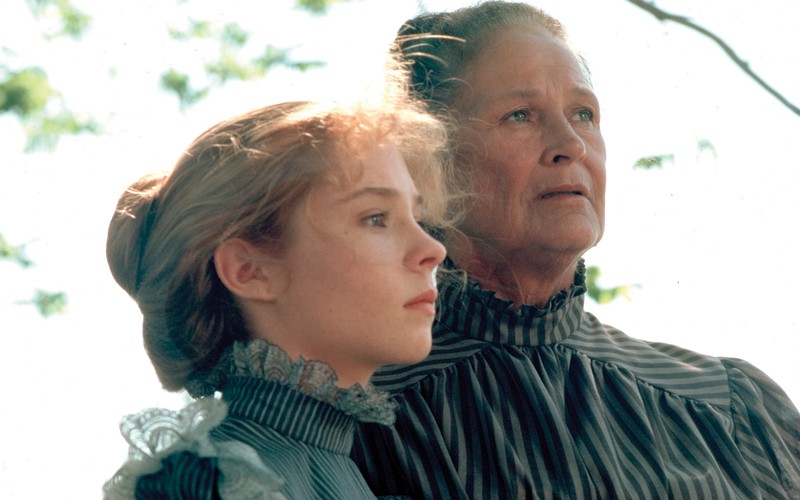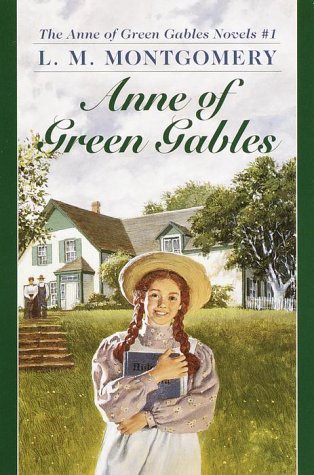What Children’s Literature Teaches Us About Money: L.M. Montgomery’s ‘Anne of Green Gables’
It’s okay to buy enough fabric for your dress to have puffed sleeves. (Saving a few dollars on fabric won’t help you when the bank fails.)

When Marilla and Matthew Cuthbert agree to adopt an orphan to help them with Green Gables, they don’t seem especially concerned about whether they can afford the additional expense of raising a child. For them, this decision is about time rather than money; Matthew could hire a local boy to help him out, but both Cuthberts believe that having a young person living with them full-time will be a greater help, in the long run.
But in the long run, as readers know, they get Anne Shirley instead; a young girl instead of the expected young boy, and Matthew ends up hiring Little Jerry Buote to help him on the farm anyway.
We don’t ever get the sense — at least not in the first two-thirds of the novel — that the Cuthberts are experiencing any financial stress; it’s not clear how large the Green Gables farm is, but we know that they have an orchard and grow both potatoes and turnips, among other vegetables, and they have cows and pigs. Matthew sells some of their produce, Marilla and Anne store the rest in the cellar for winter, there’s probably a butchering scene that Montgomery carefully leaves off the page, and Green Gables more than thrives.
We also know, when Marilla makes Anne’s dresses “with sleeves as plain as waist and skirt and tight as sleeves could be,” it isn’t because she’s worried about money. Marilla is worried about money, in the way that very frugal people are always worried about money, but she’s not worried about having enough money tomorrow. She’s worried about not having enough money ten years from now.
Which, as readers might remember, is exactly what comes to pass.

For the majority of the novel, we get a story in which money — aside from Marilla’s frugality, which is presented as a character flaw — is not really a concern; Anne gets to enjoy everything from store-bought caramels to her coveted puffed-sleeve dress, and although her bosom friend Diana Barry is not allowed to attend Queen’s Academy, Anne goes — and Marilla and Matthew pay for her room and board while she is away.
Part of the reason Marilla and Matthew (especially Marilla) want Anne to attend Queen’s is so Anne can become a teacher and earn her own money. Diana doesn’t get to go to Queen’s because her parents assume she’ll marry a man who will provide for her, but Marilla — who never married — has a different perspective:
I believe in a girl being fitted to earn her own living whether she ever has to or not. You’ll always have a home at Green Gables as long as Matthew and I are here, but nobody knows what is going to happen in this uncertain world, and it’s just as well to be prepared.
Which brings us to the failure of the Abbey Bank. I always forget about this part of the book, probably because it isn’t in the movie, and every time I re-read it shocks me a little bit: Marilla’s great fear comes to pass and the Cuthberts do find themselves penniless. This is how Matthew dies, in the novel: by opening a letter announcing that the Abbey Bank has failed and realizing his family has lost everything.
Not quite everything, of course. Green Gables still has one important resource: Anne, who has just received a full scholarship to college, decides to stay at home and teach at one of the local schools. (Gilbert Blythe, as you might remember, gives up his post at the Avonlea school so Anne can teach close to home — and their romance begins.) Anne does this for two reasons: first because Marilla is in poor health, and second because this is the only way to save Green Gables. If Anne left, Marilla could not run the farm on her own. With Anne there, and with the money they earn from her teaching salary, they can hire someone to help them on the farm and just get by.
The book ends with Anne’s sacrifice, and it’s important to remember that at the time, L.M. Montgomery did not plan to write seven sequels. (Eight, if you count the The Blythes Are Quoted, which remained unpublished until 2009 — and for good reason.) We leave the story understanding that Anne will be a good teacher and that she’ll learn everything that she wanted to study in college by reading books from the library; we also know that Marilla will be well taken care of and that Green Gables will someday thrive again — perhaps around the time when Anne and Gilbert admit their feelings for each other.
Then we get our sequels, and Anne gets to go to college in Book Three, Anne of the Island. It’s worth noting that Anne is only able to go after Rachel Lynde’s husband dies and Rachel moves into Green Gables, freeing Anne from her caretaking responsibility. Marilla also adopts twins, which I always read as a bizarre plot development and, perhaps, the first example of the Cousin Oliver trope. Either way, Green Gables is full and Anne is free to continue her adventures.
After Anne graduates she is able to take a position as a high school principal, and earn more money than she was making at the local Avonlea school. She also earns money by writing stories for magazines, which she was able to do both before and after she got her degree.
Then Anne marries Gilbert and gives up her teaching and writing work to take care of their home and children, just like she gave up college to take care of Marilla. It’s really easy to read this as a “bad thing,” like Anne should have followed her own ambitions and reached some kind of potential, but it’s clear that Anne never feels that way. She loves home. She explains all of that in the first chapters of Anne of Green Gables: home, and the people in it, are more important to her than anything.
But I’m glad to think of getting home. You see, I’ve never had a real home since I can remember. It gives me that pleasant ache again just to think of coming to a really truly home.
So. What does Anne of Green Gables teach us about money? Be thrifty with your funds, perhaps, but invest in people. No amount of preparation can prevent financial disaster. It’s okay to buy enough fabric for your dress to have puffed sleeves. When you do lose everything, it’s the people around you who will help. Sometimes you need to earn money right away, but going to college can get you a better-paying job later. (That’s kind of what Anne of the Island and Anne of Windy Poplars teaches us about money.) You can always learn what you want to know at the library. Love — and home — are worth more than anything.
Previously:
What Children’s Literature Teaches Us About Money: Ann M. Martin’s ‘Kristy’s Great Idea’
Support The Billfold
The Billfold continues to exist thanks to support from our readers. Help us continue to do our work by making a monthly pledge on Patreon or a one-time-only contribution through PayPal.
Comments